Investors know that stocks are very different from bonds. But due to the persistent low interest rate environment, aging investors have more and more turned to both dividend stocks and high yield bonds as a source of fixed income for their retirement. Let’s take a look at how these two very different investments compare.
Dividend Yield
An investment in high yield bonds will almost always give you a higher source of dividend income than dividend stocks. For example, an easy way to invest in high yield bonds is to buy an Exchange Traded Fund (ETF) that invests in them. There are two good candidates: SPDR Barclays Capital High Yield Bond Fund (JNK) and iShares iBoxx High Yield Corporate Bond Fund (HYG). Both of these funds have high annual yields: 7.50% for JNK and 6.80% for HYG. Compare this to investing in a basket of dividend stocks. Unless you venture out into speculative stock territory, you can expect a portfolio of relatively stable, high quality U.S. dividend stocks to currently yield no more than about 3.5 percent. And U.S. stock dividend ETF choices reflect this fact. The highest yielder of the bunch is currently iShares Dow Jones Select Dividend Index (DVY) with a trailing 12 month yield of 3.44 percent. From there it becomes less attractive: 3.17% for the SPDR S&P Dividend (SDY), 2.88 percent for the Vanguard High Dividend Yield Index ETF (VYM), and a meager 2.09 percent for Vanguard Dividend Appreciation ETF (VIG).
One way you can boost the yield in equities is by looking abroad. It’s not practical for a typical investor to own a bunch of individual international stocks. A better alternative may be to invest in an ETF that holds them, such as the SPDR S&P International Dividend Fund (DWX), which offers a current yield of 6.82 percent, and the iShares Dow Jones International Select Dividend Index (IDV) which currently pays 5.22% per annum. But of course these last two choices would subject you to the additional risk of investing in international stocks, which are typically more risky than their U.S. counterparts.
Volatility and Risk
This brings us to the second point: stocks are significantly more volatile and risky than high yield bonds. This was true even during the most recent global economic recession. As an example, compare the performance of a typical high yield bond ETF to a stock dividend ETF:
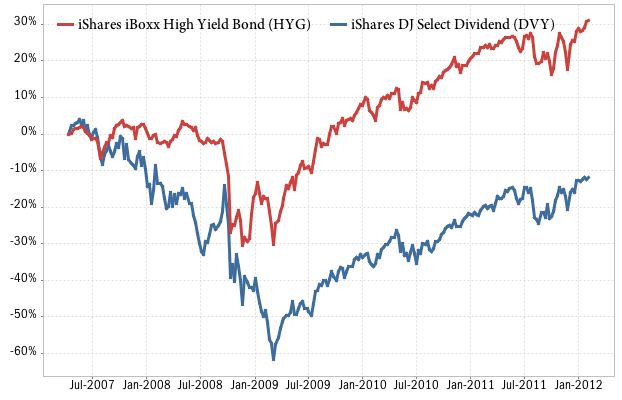
As you can see, the stock dividend ETF (DVY) lost almost twice as much of its peak value during the most recent bear market: a 63 percent maximum drawdown from peak to trough, compared to -33% for the HYG high yield bond fund. Also, high yield bonds have fully recovered from the bear market, and an investor who has held the HYG fund since it started trading in April 2007 would now have a gain of 31 percent. By comparison, the stock dividend ETF holder would still be looking at a 12% loss today. The Volatility in the DVY fund (as measured by Annualized Standard Deviation) is 26%, compared to 16.5% in HYG.
An investor in one of the international stock dividend ETFs would have fared even worse against the high yield bond ETFs. For example, compare the performance of HYG against DWX:
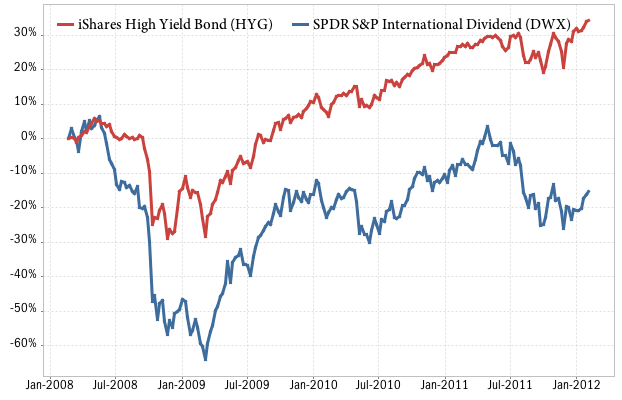
With Volatility of 33.6% and a maximum drawdown of -66.2%, the international stock dividend investor got absolutely hammered, and is still looking at a 15% drawdown today, compared with a 34% gain in high yield bonds over the same period. (Note: the DWX fund first became available on 2/20/2008 after the bear market was already under way, so the performance would have been even worse if measured from the top in 2007). The old saying “no pain, no gain” certainly applies to long-term stock investors: they get paid for taking on additional risk, which leads us to the third factor.
Capital Appreciation
Stocks can fall faster and further than junk bonds, but they also offer the possibility of significant capital appreciation in the long term. You can see this in long-term stock charts, where the annualized return of stocks far outpaces high yield bonds. But you can also get a good feel for it when you see how quickly a typical dividend stock ETF recovered after the 2009 bear market bottom. The chart below shows how the DVY stock dividend fund has gained 129% since March 2009 and has consistently stayed ahead of the HYG junk bonds ETF, which is up 87% over the same period:
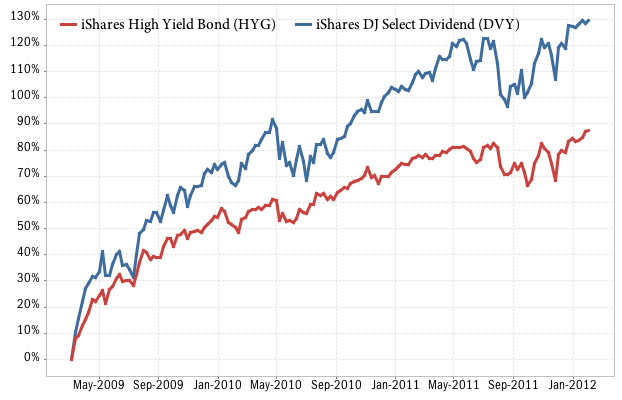
Tactical Bond Portfolio
While a strategic allocation (“buy and hold” investment) in high yield bonds is less volatile than stocks, it is far from risk-free. As we saw, this asset class still had a maximum drawdown of 33% in 2008-2009 and significant volatility. Perhaps the best of both worlds (dividends plus capital appreciation) is to invest in high yield bonds using a tactical asset allocation, which allows you to benefit from the high current yields while also actively managing the downside risk.
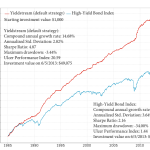
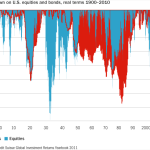
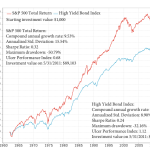
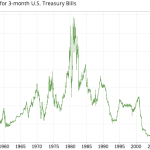
Comments
To add a comment, please Sign In.